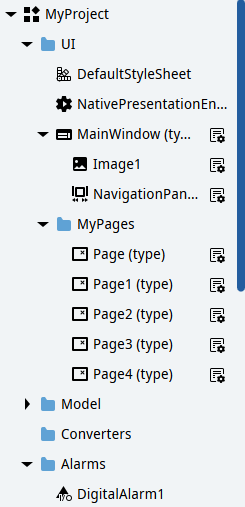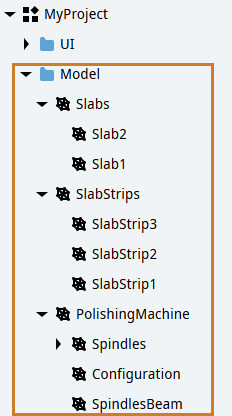Information Model¶
Nodes and information model
In UNIQO, all the objects, object types, variables, variable types and methods are generically defined as nodes.
We refer to the concept of information model to indicate the set of nodes that describes the structure and characteristics of a node in the project. Each object, variable, type or method is therefore described by its own information model.
Example
A motor consisting of two parts, a stator and a crankshaft, can be represented by the following information model. All the elements described are nodes, in particular objects (in blue) and variables (in pink).
Information Model of a Project
The set of all objects, variables, types and methods in a UNIQO project is conventionally defined project information model.
Example
Below is an example of how the different nodes of a project are displayed in Q Studio (see Q Studio Interface). The project information model is the information model of the MyProject root node.
The nodes are organized in folders for better project readability.

Information models to represent physical objects
Generally, it is recommended to structure the project to mirror as much as possible the machine structure for which the application is created; the project is thus more readable. Also, in the case of applications for modular machines, it is convenient to represent these modules by structuring them similar to the physical world; this to facilitate their reuse in the project.
Example
Below is a partial example of a project in which the structure of the objects mirrors the structure of the machine:

